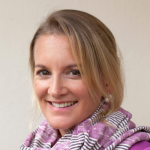
In MS, the immune system mistakenly attacks the fatty substance covering nerve cells, called myelin. This triggers inflammation and loss of the protective coating around some nerves. To date, the drugs used to treat MS are mostly immunosuppressive in nature and we are yet to see an effective drug to repair this damage to myelin. There is an urgent need for new drugs to both protect myelin and to promote myelin growth and repair, termed remyelination.
There is a group of drugs used to treat MS called sphingosine-1-phosphate (S1P) receptor agonists, known more commonly as S1Ps, such as fingolimod, siponimod (Mayzent®) and the newer addition, ozanimod (Zeposia®). These drugs are known to be immunosuppressive in nature, reducing the inflammation commonly seen in MS. However, recent evidence suggests that they may in fact also have properties to promote remyelination. It is also thought that some people living with MS may have low levels of naturally occurring S1P in the body and that these drugs can act like the naturally occurring S1P, potentially explaining some of their positive effects.
Associate Professor Don and his team will investigate if the S1P drugs are myelin protective, if they promote the formation of myelin, and the processes by which this may happen. Additionally, the research team will also explore whether people living with MS may be deficient in the S1P in the first place, helping us to better understand how this class of drug impacts MS. This research will add to our understanding of the mechanisms of action for these drugs, as well as shedding light on a potential source of remyelination for those living with MS.
Associate Professor Don and his team have established that naturally occurring S1P in the body is an important protective molecule for myelin-producing cells and is essential for remyelination following demyelination.
Laboratory models of MS lacking the enzyme SphK2, which catalyses formation of S1P in the brain, were more susceptible to demyelination and unable to remyelinate.
Associate Professor Don and his team next determined whether siponimod protect myelin-producing cells and myelin. Siponimod was found to be protective at certain doses in laboratory models. Interestingly, the concentration of siponimod in the blood that conferred protective effects is equivalent to that in people receiving this treatment. This suggests that the dose of siponimod given to people with MS has direct neuroprotective properties, which is of tremendous clinical importance and could explain the success of siponimod in clinical trials for secondary progressive MS.
The final part of this study involved determining the mechanism by which S1Ps provide protection. Specifically, Associate Professor Don and his team investigated whether both S1PR1 and S1PR5 are both required for protection of myelin-producing cells and myelin. The team took advantage of the fact that ozanimod activates both receptors in humans but only S1PR1 in laboratory models, whereas siponimod activates both receptors in humans and laboratory models. They found that ozanimod was not protective in laboratory models while siponimod was, suggesting that activation of both S1PR1 and S1PR5 is required to protect myelin-producing cells and myelin.
The results of this study are clinically important, first in demonstrating that this group of drugs must activate the S1PR5 receptor to achieve myelin protection, and secondly in demonstrating that S1Ps are neuroprotective as well as immunosuppressive.
Associate Professor Don has published several research articles and has been successful in leveraging further funding from the National Health and Medical Research Council (NHMRC) to extend this study.
Updated: 31 March 2023
Updated: 19 January, 2021

Laboratory research that investigates scientific theories behind the possible causes, disease progression, ways to diagnose and better treat MS.

Research that builds on fundamental scientific research to develop new therapies, medical procedures or diagnostics and advances it closer to the clinic.

Clinical research is the culmination of fundamental and translational research turning those research discoveries into treatments and interventions for people with MS.

